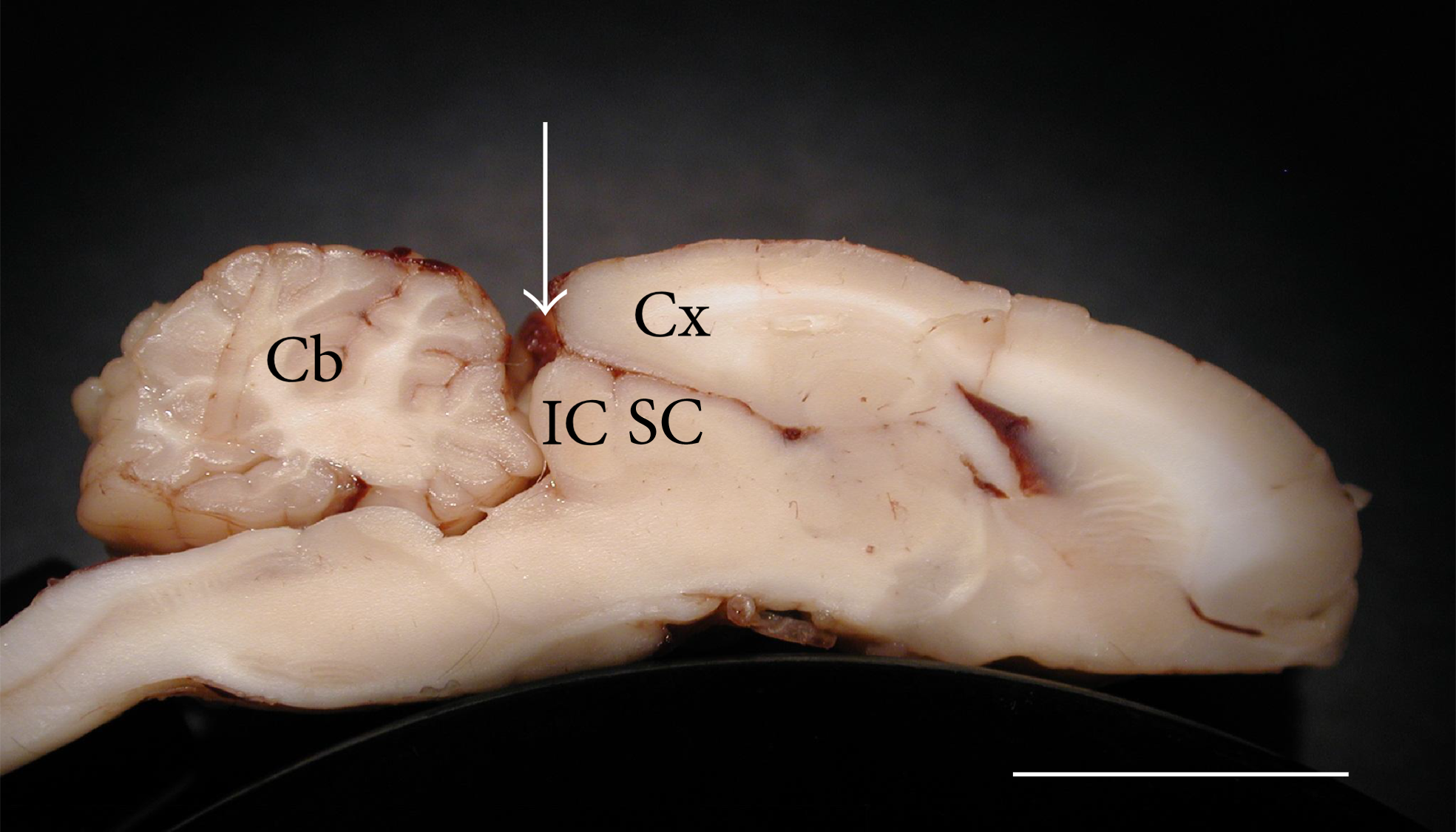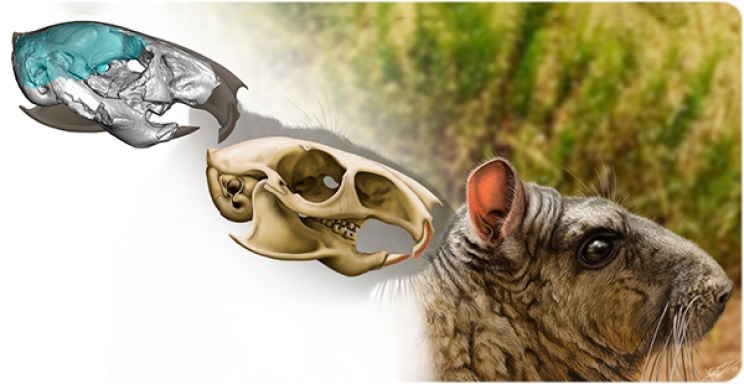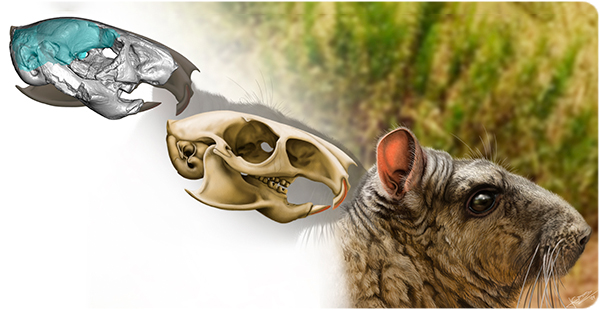South American rodents, also known as Caviomorpha, are endemic to South America, but some can also be found in Central and North America. “One of the biggest mysteries in paleontology relates to how this group of rodents arrived on this continent since it was completely isolated from the rest of the world until at least 20 million years ago”, explains Ornella Bertrand, main author of the recent article published in Papers in Palaeontology and ‘Beatriu de Pinós’ researcher at the ICP. The closest relatives to caviomorph rodents are in Africa and Asia. The most likely hypothesis for their dispersal involves rafting from Africa to South America using “floating islands” made of plant matter that got carried away from the continent in the ocean during storms.
Caviomorph rodents are extremely diverse today and include nearly 250 species. They also occupy many different ecological niches and include arboreal, terrestrial, fossorial and semiaquatic lifestyles. They also show a wide range of sizes including the largest known rodent today, the capybara averaging 60-70kg. “One aspect of their diversity that has been relatively overlooked is the evolution of their brain. Brain endocasts have been produced for fossil specimens, but they are not older than the Early Miocene (20 Mya)”, states Bertrand.
To improve our understanding of the brain evolution of caviomorph rodents, researchers CT scanned a well-preserved skull of the caviomorph Incamys from Bolivia dated to the late Oligocene (26-27 Mya), and curated at the Yale Peabody Museum collections in the USA. Since brain tissues rarely preserve in the fossil record, endocasts (the imprint of the brain against the inner part of the cranium) can provide paleontologists with important information about the senses and behaviours of extinct species. The fossil Incamys is now the oldest known caviomorph rodent for which a brain endocast has been described.
While Incamys was originally placed in the Cavioidea superfamily that includes the living capybara, new phylogenetic analyses have shown that this taxon is more closely related chinchillids (Chinchillidae family), the group that includes chinchillas and viscachas. Because Incamys lacks signature features of true Chinchillidae, it is placed at the base of the group as “stem-chinchillidae”.
Living Chinchillidae can be found in dry environments in the western and southern regions of South America including the highlands of Ecuador to the Andes of Peru and Bolivia. They also live in the coastal mountains of Chile and the steppe of Patagonia in Argentina. Chinchillids inhabit environments with a rocky landscape and jump from one rock to another, but some species are also diggers. No postcranial bones have been recovered for Incamys, leaving its locomotor behaviour unclear. Its diet is also difficult to assess, but based on its teeth, it was most likely an herbivore with a similar diet to modern species. “Incamys would have weighed up to 700 grams, making it slightly larger than a modern chinchilla, which typically weighs around 300 grams. This led us to create a life reconstruction that more closely resembles chinchillas rather than plains or mountain viscachas, which are significantly larger in body size”, reveals Bertrand.
A relevant and fascinating behaviour of chinchillid rodents is that they produce a wide range of vocalization to communicate with other members of their group or colony. Different calls also known as whistles may correspond to different predators.
For this project, researchers created virtual brain endocasts for the fossil Incamys and for the three living Chinchillidae: chinchilla, plains viscacha, and mountain viscacha to uncover how the brain of the ancestor of Chinchillidae may have looked like. They found that Incamys displayed an expansion of the temporal lobes of the cerebrum. This region of the brain and more specifically of the neocortex includes the auditory cortex responsible for processing sounds from our surroundings.
Another region of the brain, the midbrain, also known as the optic tectum in non-mammalian vertebrates was also expanded in Incamys. In mammals, a visible midbrain has been seen as an ancestral feature because in modern species, this region of the brain is covered by the expansion of the cerebrum and/or of the cerebellum. The midbrain includes two main parts: the caudal (inferior) colliculi and the rostral (superior) colliculi, which are involved in acoustic and visual reflexes, respectively.
In rodents, and in chinchillas more specifically, the caudal colliculi are crucial for processing vocalizations within members of a group. In living chinchillas, cross-sections of the brain reveal that the caudal colliculi are very large and in contact with the cerebrum, rather than being located below the rostral colliculi. Due to the expansive cerebrum covering them, the caudal colliculi are not visible on the brain's surface in chinchillas, but they appear larger compared to other rodents, such as tree squirrels, which have more prominent rostral colliculi.

Cross-section through the brain of Chinchilla laniger. Abbreviations: IC, inferior colliculus; Cb, cerebellum; Cx, intergrity of cortex (cerebrum), SC, superior colliculi. Scale bar=1cm.
Modified from D’Alessandro et al. (2016) DOI: 10.1155/2016/3734646)
Given the observed correlation between midbrain structure and auditory function in extant species, the researchers inferred that the exposed caudal colliculi in Incamys were likely enlarged, mirroring the pattern seen in living chinchillas. “I scanned this specimen during my PhD research at the University of Toronto back in 2014. When my colleague and co-author Maddy Lang segmented the brain endocast, I was immediately captivated by the sight of the exposed caudal colliculi”, explains Bertrand. The visibility of the caudal colliculi in Incamys is attributed to the lesser expansion of the cerebrum compared to modern species. Researchers concluded that this evidence suggests Incamys was capable to process vocalizations coming from other individuals, suggesting a group-living for this fossil species as seen in chinchillas today.
“Chinchillas live in colonies that can be up to 100 individuals. Very few populations are still present in the wild today due to illegal hunting and habitat loss. The possible future success of reintroducing them into the wild could hinge upon the intricate communication system they've evolved over millions of years. This system may play a pivotal role in their long-term survival”, concludes Bertrand.
This research was partly funded by Beatriu de Pinós Programme by the Direcció General de Recerca de la Generalitat de Catalunya and managed by AGAUR.
Main image. Brain virtual endocast inside the translucent skull (left), skull reconstruction (middle) and life reconstruction (right) of the late Oligocene Incamys bolivianus (YPM VPPU 21945) from the Salla-Luribay Basin in Bolivia. Credit: Jesús Gamarra González / © Institut Català de Paleontologia Miquel Crusafont.
Original article:
- Bertrand, O. C., Lang, M. M., Ferreira, J. D., Kerber, L., Kynigopoulou, Z., & Silcox, T. (2024, published online) The virtual brain endocast of Incamys bolivianus: Insight from the neurosensory system into the adaptive radiation of South American rodents. Papers in Palaeontology. DOI: 1002/spp2.1562











